Editor’s Note: CNN Insider Guides are thoroughly checked for accuracy. Given the fluid nature of the travel industry, however, some listings may fall out of date before guides can be updated. The best practice is to confirm current information on official websites before making plans to visit any business or attraction.
The best of Manila is most easily found in its confluence of identities.
It’s urban yet still developing. The city has world-class hotels and amenities, but no shortage of places for those on an adventure budget.
Then there’s the food. The Manila table reflects the country’s history, with Spanish, Chinese, Japanese and American influences.
With 12 million residents, Manila nevertheless doesn’t attract the same number of tourists as many Asian capital cities – it’s still often a transit city to the white sand beaches of Boracay and Palawan, or the vacation island of Cebu. Yet local expats will say that it’s one of the best places to live in Asia – and even retire in.
Why? The comforts, soul, fiesta attitude and, most of all, the people. When you meet a Filipino, you instantly become a friend, and they’ll be more than happy to show you around.
Since it’s (now, officially) more fun in the Philippines, government and private developers have been increasing efforts to beautify the congested capital and reduce pollution at the same time, with open-air green developments such as Ayala Triangle Park and Bonifacio High Street, vertical gardens under flyovers and tunnel walls and, coming soon, plant boxes on 900 lampposts along the main highway, EDSA.
Here’s a quick guide to the best of Manila:
Hotels
Luxury
Makati Shangri-La
If you think understated elegance is overrated, Makati Shangri-La will change your mind.
Manila’s top business travelers and politicians come to play at the Makati Shangri-La.
Local heavyweights are often spotted buzzing in and out of the main and side entrances heading for the hotel’s restaurants – Red, Inagiku and Shang Palace – which are popular venues for meetings.
Rooms are Manila’s swankiest, some overlooking the skyline of the Makati financial district.
Foodies take note: the breakfast buffet is one of the largest and most extensive in the country.
Peninsula Manila
The most luxurious stay in town.
The Peninsula Manila has quite the history.
The 11-story towers were built in 1976 by former president Ferdinand Marcos and first lady Imelda to impress delegates attending the International Monetary Fund conference.
The walls came crashing down in 2007 when an army tank rammed into the lobby during an attempted coup in which rebel soldiers occupied the building and discharged gun shots and tear gas.
Nonetheless, the now-restored best of Manila hotel remains one of the city’s most luxurious, with a four-story ceiling giving way to a 12-meter “Sunburst” installation by National Artist Napoleon Abueva.
Rooms are dressed with classic Filipiniana touches, like native weavings on the sofas and curtains, and transparent shells for lampshades.
Raffles Makati and Fairmot Makati
The 32 all-suite Raffles Makati is home to the Writer’s Bar (styled as a library) and the Long Bar.
Both have Filipino art pieces, including a mural of boxing legend Manny Pacquiao in the latter.
The 280-room Fairmont Makat shares ballrooms and other facilities.
You can tell where you are simply by looking at the color of the marble flooring: Raffles (white) and Fairmont (auburn gold).
Mid-range
Joya Lofts and Towers
Hate hotels? Want to cook your own breakfast? Rent one of Joya’s private units.
Across the street from upscale Power Plant Mall, Joya Lofts and Towers isn’t really a hotel.
It’s a residential building with privately owned units to let.
Situated in the Rockwell neighborhood of Makati, where streets are wide and clean, each unit is furnished with a kitchen stovetop, refrigerator, microwave, dishwasher and dining area.
Wired Internet is complimentary; however, there’s a fee for Wi-Fi.
Manila food: 6 dishes every visitor should try
Picasso Boutique Serviced Residences
In a historic building with found objects from construction integrated into its architecture, Picasso Boutique Serviced Residences is designed to be an “engine of art.”
Exterior images assemble only when the façade is viewed from certain angles.
Ceiling mirrors reflect the streets as you sip coffee.
The color palette was inspired by Picasso’s work.
Rooms are named after the cities in which Picasso lived, such as Malaga (where the artist was born), Madrid (where he first studied art) and are equipped with kitchenettes.
An in-house gallery, Altro Mondo, displays works by emerging talents; the 1920s European-inspired Brasserie Boheme has become great Manila venue for laid-back nightcaps.
The Picasso is within walking distance of popular Salcedo Market, which runs every Saturday in a nearby park.
Budget
Guijo Suites
Rooms are small (not all have windows), but they’re clean, comfortable and include a flat-screen TV with cable channels.
All rooms are non-smoking.
Though the hotel doesn’t give out complimentary drinking water – strange – it does offer free Wi-Fi and breakfast.
Guijo Suites is located in the back streets of Makati.
While only a couple of fast food joints are found within walking distance, a short cab ride will take you to the central malls.
Bring a printed map of the hotel’s hidden location to show your taxi driver.
Dining
Sala Bistro/People’s Palace
Scottish chef Colin MacKay put these two restaurants right smack next two each other in Manila’s prime Greenbelt neighborhood.
Sala Bistro is a modern European bistro that serves a mean steak tartare.
The interior is rich and dark with white linens.
People’s Palace is a modern Thai restaurant with a long bar, white chairs and tables inside and day beds outside.
Shrimp pomelo salad, pad thai and green chicken curry often get repeat orders.
El Cirkulo
Given that Spain ruled the Philippines for 400 years, its colonial influence naturally spreads to the kitchen.
Run by sibling chefs J Gamboa and Malu, El Cirkulo serves very good Spanish tapas (some with a Filipino twist), like roasted bone marrow, and a large selection of paellas including the Paella Montana (portobello mushrooms, roasted garlic, truffle oil and asparagus).
It’s also where you’ll find the best sisig in town, the Cabeza de Cerdo.
This famed crunchy yet soft Filipino snack is made with suckling pig head parts and features a tinge of spice. If you’re looking for a best of Manila treat, this is it.
Abe
The Capampangan word for “friend” and “getting together” – and also the nickname of late owner Larry J. Cruz’s father, Emilio Aguilar Cruz – Abe features cuisine from the province of Pampanga, culinary center of the Philippines.
A restaurant that buzzes with lively chatter from different tables, this is the place many locals bring their foreign guests to introduce them to Filipino food.
Dishes are flavorful, like the lamb adobo with popped-garlic crispy pla pla, paco fern and tomato salad and gising-gising.
Dampa
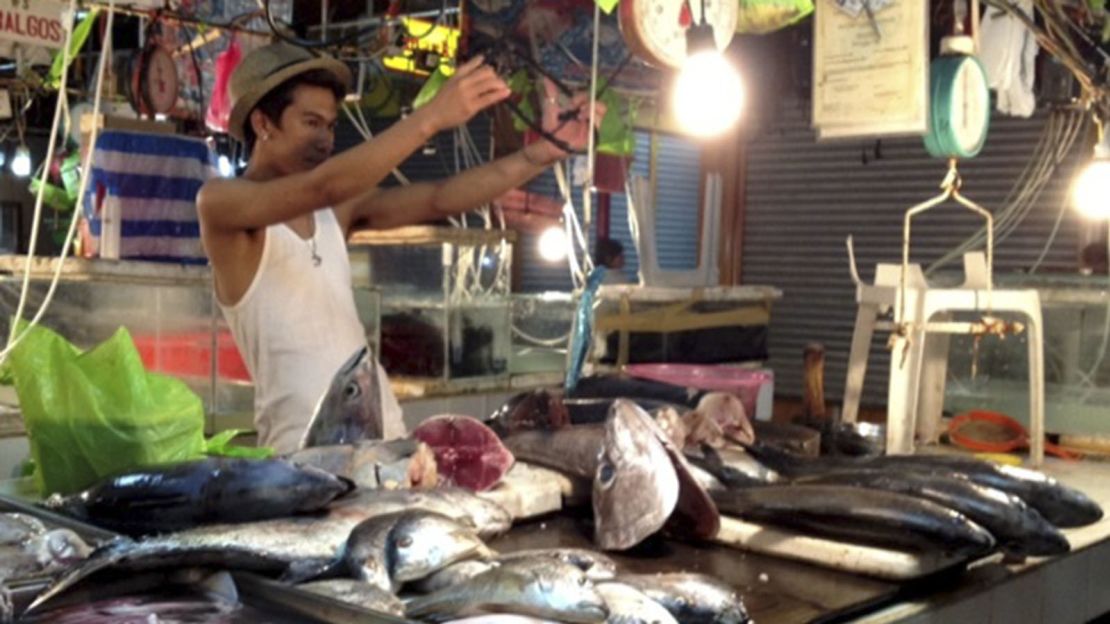
In Manila’s famed dampas, everything smells fishy.
If you’ve heard the word “dampa” (wet market), that could be because U.S. celebrity chef Anthony Bourdain ate lunch at one when he visited Manila.
You choose your own seaside catches of the day and vendors will cook it for you – grilled, steamed, fried, however you like.
There are several dampas around Manila, but the more popular ones are on Macapagal Avenue (largest variety) and Farmers Market (where Bourdain ate).
Damp and murky, it smells and feels like what it is – a wet market. Best dress casual
Dampa, Farmers Market, Quezon City and Macapagal Avenue, Pasay City
Van Gogh Is Bipolar
Owner Jetro Raphael was diagnosed with a bipolar disorder and studied mood-altering food to trigger body hormones for his personal diet.
He eventually opened up his quaint and quirky home into a restaurant, serving dishes such as turkey, salmon, eggs and black mountain rice, naming dishes after personalities diagnosed as bipolar such as Axl Rose’s Egg Shot, Virginia Woolf’s Tears and Mel Gibson’s Darkest Sin, all with curative “chill” or “happy” properties.
Shoes are to be taken off upon entrance, and payment runs by an honor system.
The restaurant is open only when Raphael feels like it so best to text or call him in advance.
Little Tokyo
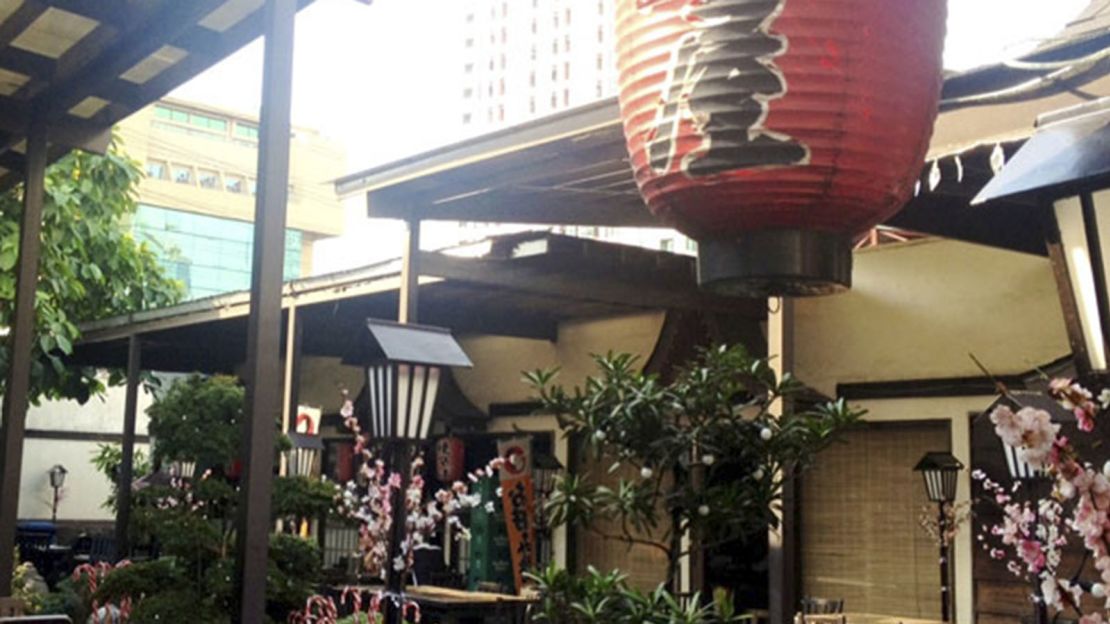
Some of the best Japanese restaurants in the country are no-frills affairs found in a compound called Little Tokyo.
Zen gardens, red lanterns and Japanese signs almost give the impression that you’re in Japan.
Restaurants here are generally owned by Japanese who have moved to the country to start families with Filipina wives.
You’ll find fresh sushi, sashimi and bento meals atSeryna, and ramen at Shinjuku.
There’s a small grocery and snack bar called Choto Stop, which sells soba and ramen amid a display of manga comics and Japanese TV.
Little Tokyo, 2277 Chino Roces Ave., Makati City
Weekend markets

There’s good reason to not overdo things on Friday nights.
From 7 a.m. to 2 p.m. on Saturdays, Salcedo Park turns into a weekend market where home-based cooks sell their delicacies.
On Sundays, Legazpi Park turns into a market, with a focus on organic produce and beauty products.
Food trucks have recently invaded the city, led by Cucina Andare, brainchild of the Mercato Centrale Group.
From 4 p.m. to 3 a.m., Friday to Sunday, Glorietta Park turns into a food truck market and bazaar with live music and entertainment to feed the after-office and after-party crowds. Shawarma Bros serves roasted seasoned lamb, chicken and beef on hearty open plates with biryani rice.
Merry Moo serves homemade artisan ice cream made from fresh local dairy from farmers in Laguna, with unique flavors like cookie butter, Poprocks & Mallows, horlicks and candied bacon.
Nightlife
Blind Pig
The Blind Pig is Manila’s best bet for a drink. If you can find it.
Residents who once complained about how hard it is to find a proper cocktail in Manila rejoiced with the opening of Blind Pig.
The first speakeasy in Manila, Blind Pig is located in a nondescript building without a name or sign, except for simple braille lettering.
Ring the doorbell to gain access to the dark bar, an ode to the 1920s U.S. Prohibition era.
The Gold Rush is a beautiful whiskey-based drink stirred with honey and lemon juice.
Smokey Old Bastard is a powerful concoction of scotch, maple syrup and orange smoke.
The crowd is mostly regulars, who heard of the bar by word of mouth, and returned with a friend, who returned with another friend.
Come on a quiet evening and you might find the bartenders hand-cutting ice themselves.
Museum Café
This café opposite Ayala Museum has artwork and furniture for sale in the back.
Come sundown, rays of light permeate the floor-to-ceiling glass doors, making it the perfect backdrop for an after-hours cocktail.
Museum Café, more popularly known as M, recently took over the Museum Shop and built Kabila, a restaurant with an all-Filipino menu.
Thursday and Friday nights are most popular with expats and visitors, turning the plaza and garden into an outdoor party with local and international DJs spinning house, funk and Afro beats.
Skye Lounge
Skye is the first real rooftop bar in Manila.
Sitting atop the W Building, it allows a rare breath of fresh air and an expansive view of the Fort Bonifacio skyline.
The bar attracts a young and laid-back crowd tired of elbowing their way through the city’s typically claustrophobic and smoky clubs.
Draft Gastropub
Draft has been a consistent watering hole for imported and local brews at a competitive price.
Packed nightly with young executives, expats and celebs, European comfort food, like Angry Drunk Mussels and the best sticky date and toffee pudding in the world is served over a large selection of beer brands, including six kinds of imported beer on tap.
Salon de Ning/Pen Bar
Manila’s Salon de Ning is the fanciest bar in town.
The Peninsula Hotel houses the most ornate bar in the country, Salon de Ning, which recalls 1930s Shanghai.
Themed rooms are furnished with art deco pieces, providing a best of Manila experience.
The live band of the night is the focal point.
Right across the way is the Cuban-inspired Pen Bar, with big window blinds, leather seats and checkered floors.
While filming “Bourne Legacy,” actor Jeremy Renner dressed in a T-shirt and baseball cap and often parked himself at Pen’s square bar, along with members of the film crew.
Salon de Ning/Pen Bar, Peninsula Manila, corner of Ayala and Makati Avenues, Makati City; +63 2 887 2888
Republiq and Opus
Republiq is the pied piper of the Manila club scene.
Born as Embassy, reincarnated as Encore and now Republiq, wherever the club went – from The Fort to Resorts World Manila – crowds followed.
With international DJs, such as Calvin Harris, Avicii, Kaskade and LMFAO playing sold-out sets, and lines that snake longer than those at airport immigration, Republiq sits on the throne as the king of Manila’s club scene.
Sister restaurant and lounge Opus attracts an older, stylish 25-40 set, a generally see-and-be-seen crowd that starts the night in laid-back style before turning it into a full-blown party at the stroke of midnight.
Ringside
Little people boxing. Either you’ll love it or hate it.
Located in Makati’s red light district, Ringside has drawn many a spectator’s curiosity, including burlesque dancer Dita von Teese, who stopped by on her trip to Manila a few years ago.
If you’re game, you can join boxers onstage and play referee.
One warning: If you’re male and look like you work out, the lady boxers may try to convince you to referee with your shirt off.
Ringside, 4853 Kalayaan, corner P. Burgos Street, Makati; +63 2 899 7106
Shopping/Attractions
Intramuros
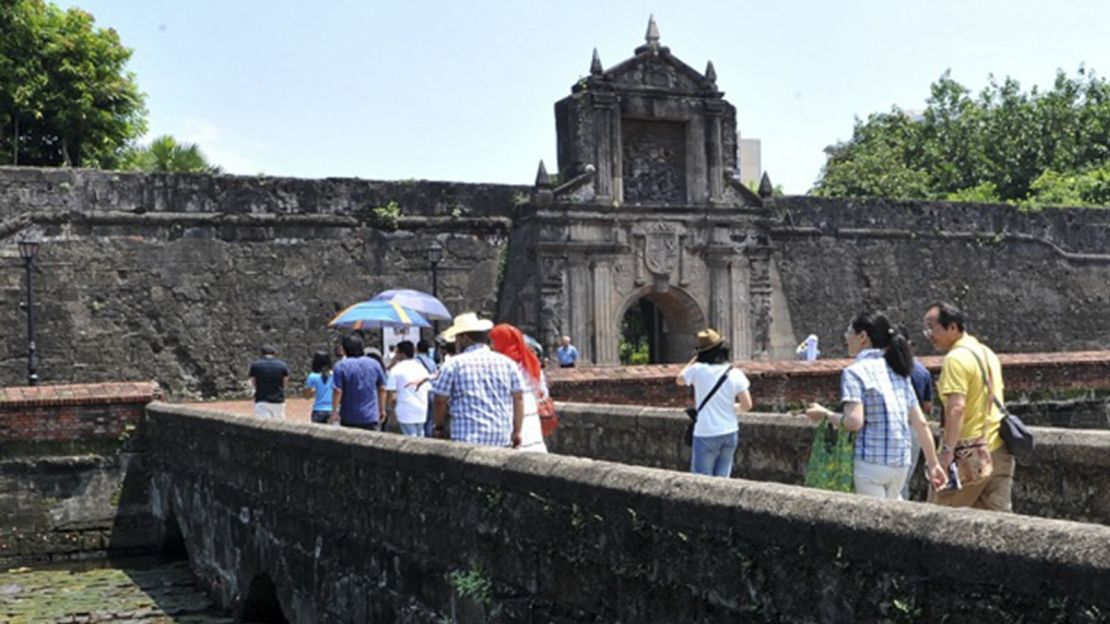
For an insider look at Manila heritage, tour guide Carlos Celdran is the man.
When you think about historic sites in Manila, Intramuros is the first place that comes to mind.
In fact, the walled city – lined with cobblestones and tramped by horse-drawn carriages known as “kalesas” – is the only part of the city where Spanish-era influences still abound.
It’s home to Manila Cathedral, a Romanesque facade with the biggest pipe organ in Southeast Asia; San Agustin Church (oldest in Manila), completed in 1607; and Fort Santiago, once the seat of Spanish military power, today a memorial to national hero Jose Rizal, who was imprisoned here before his execution in 1896 for inciting revolution against the Spaniards.
The best way to understand the place is to go on a tour with guide Carlos Celdran.
Celdran, who describes his job as “trying to change the way you look at Manila,” questions and challenges what’s written in the history books.
His “If These Walls Can Talk: The Intramuros Tour” is one of the most engaging, truthful and mind-blowing tours in the city.
The Philippines’ best beaches and islands
Chinatown
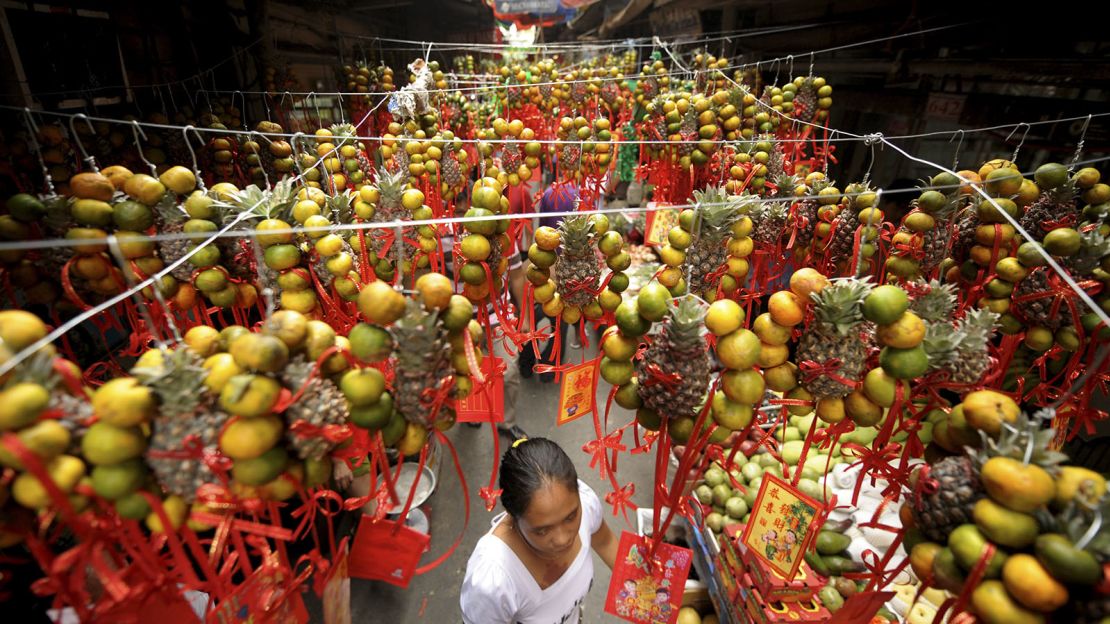
No gentrification here. Manila’s Chinatown is as gritty and authentic as ever.
Reputedly the oldest Chinatown (outside of China, we presume) in the world, Binondo was established in 1594, soon after Spaniards conquered the Philippines.
Today, it’s an amalgamation of Buddhist temples, pawn shops and Chinese restaurants, with each street housing a specialty: fresh Xiamen lumpia at Po-Heng Lumpia House on Quintin Paredes, fried noodles at Quik Snack on Carvajal and Chinatown institution President Grand Palace Restaurant on Ongpin street.
You might spot one of Chinatown’s fire trucks (manned by volunteer firefighters), which are painted purple in honor of their sponsor, a pastry shop called Eng Bee Tin on Ongpin, known for its purple yam delicacies.
Greenhills Shopping Center
Greenhills Shopping Center is an indoor-outdoor haven with more than 2,000 stores selling clothes, electronics, pirated DVDs and those beautiful pearls that came to define the Philippines as the Pearl of the Orient.
Even the Queen of Spain was spotted here shopping for pearls.
Incognito, of course.
Don’t ever agree to the first price you’re given.
The key to shopping at Greenhills is to haggle and compare prices in surrounding stalls.
Greenbelt
Overseas mall developers have commended Greenbelt, the most upscale mall in the country, for being able to mix indoor shopping and dining with landscaped gardens.
The second floor of Greenbelt 5 houses some of the country’s top local designer brand collections.
It’s also home to Adora, a well-curated lifestyle department store that looks expensive and intimidating, but actually carries affordable merchandies in addition to high-end goods.
Bonifacio High Street

Not exactly Main Street, U.S.A., but the first “main street” retail shopping area in the country, nonetheless.
It’s almost like shopping within a park. The wide, clean roads of Bonifacio High Street (BHS) make up the first “main street” retail concept in the country, with flagship stores and restaurants lining both sides of this dog-friendly park.
BHS was inspired by the Main Street, U.S.A. concept that celebrates a work and play environment, as well as the Third Street Promenade in Santa Monica, California, and The Grove in Los Angeles.
With four floors of books, the largest bookstore in the country, Fully Booked, is here.
Recent expansion south has led to Bonifacio High Street Central, with street brands found outdoors and luxury watch brands found indoors.
The restaurant row features an array of options, such as grilled meats at Cue Modern BBQ, New York-style pizza at Nolita, double chocolate yema cake at Slice, foie gras macarons at The Cake Club and a potent silver tequila concoction made with jalapeño-pepper vodka, Rocket Fuel, at retro-inspired Rocket Room, packed with both the trendy set and families almost every night.
Bonifacio High Street, Fort Bonifacio, Taguig
Cubao X and The Collective
Cubao X styles itself as a communist pub, milk-and-cookie bar and mall for stores selling retro art, vintage furniture, vinyl records and custom-leather shoes in a neighborhood that feels like “places within a place within a place.”
First conceptualized as an “anti-mall,” The Collective is a former auto shop and now home to alternative retail shops and restaurants catering to the young and hip.
Remodeled vintage bikes, vinyl toys, art prints and avant-garde clothing are some of the things you might dig up.
At night, bar B-side churns out alternative music.
On Sundays it hosts Irie Sundays: reggae, ska and dance hall with lots of beer and local street food.
Weekend trip: Tagaytay
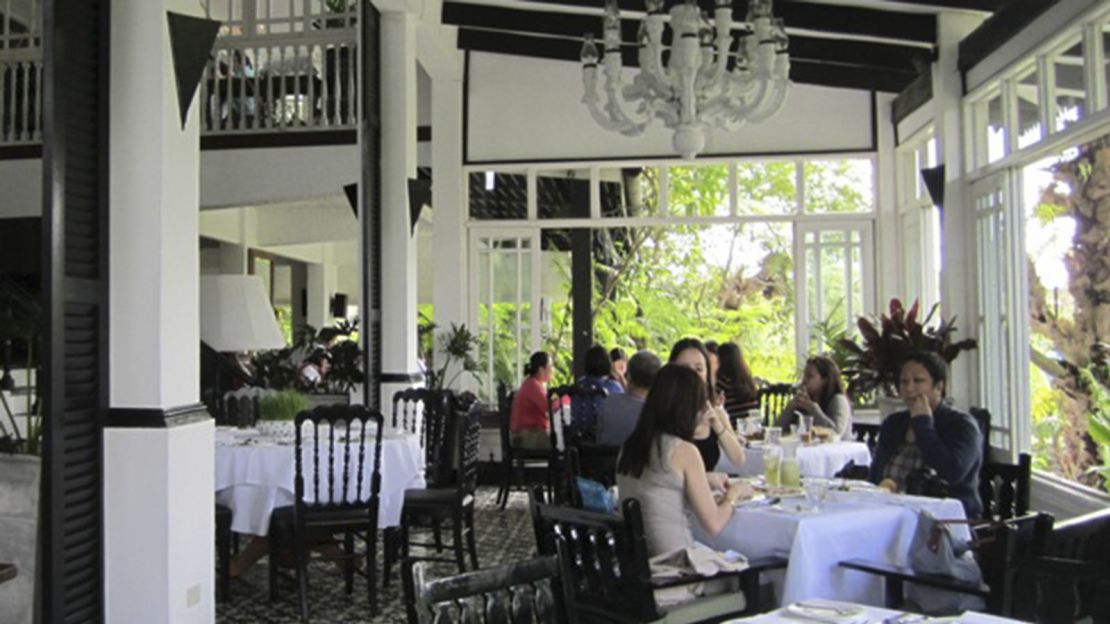
Antonio’s is viewed by many as the Philippines’ best restaurant.
Locals looking to get away from city chaos often head to Tagaytay for a day trip or overnighter.
Approximately 60 kilometers from Manila and sitting 640 meters above sea level, the city has mountains, fresh air, a cool and breezy climate and plenty of greenery.
Tagaytay is also home to Taal Volcano, the smallest active volcano in the world. It can be accessed by abanca (Filipino boat).
It’s a two-hour hike up to the crater by foot, or a leisurely ride on a tired old horse.
Plenty of locals drive to Tagaytay with the sole purpose of eating.
Antonio’s has been voted by Filipinos and expats as the best restaurant in the country, with accolades from the Miele Guide and USA Today.
Continental and Filipino fare are served in chef Tony Boy Escalante’s three-story, one-hectare home, with greens he harvests from his own garden.
Another cozy restaurant is Verbena, at luxury bed and breakfast Discovery Country Suites.
Sonya’s Garden serves an organic buffet of salads and pasta in her bed-and-breakfast garden setting.



